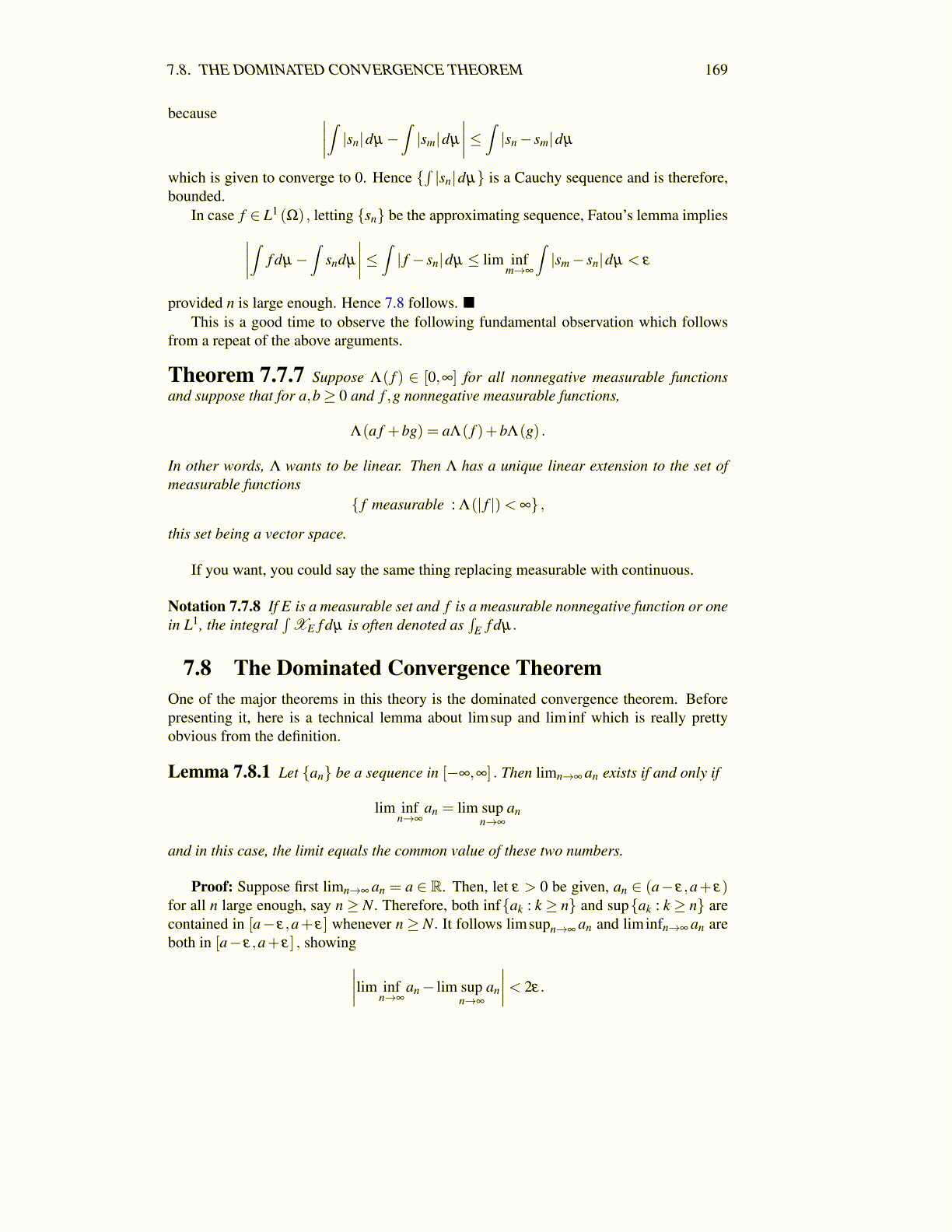
7.8. THE DOMINATED CONVERGENCE THEOREM 169
because ∣∣∣∣∫ |sn|dµ−∫|sm|dµ
∣∣∣∣≤ ∫ |sn− sm|dµ
which is given to converge to 0. Hence {∫|sn|dµ} is a Cauchy sequence and is therefore,
bounded.In case f ∈ L1 (Ω) , letting {sn} be the approximating sequence, Fatou’s lemma implies∣∣∣∣∫ f dµ−
∫sndµ
∣∣∣∣≤ ∫ | f − sn|dµ ≤ lim infm→∞
∫|sm− sn|dµ < ε
provided n is large enough. Hence 7.8 follows. ■This is a good time to observe the following fundamental observation which follows
from a repeat of the above arguments.
Theorem 7.7.7 Suppose Λ( f ) ∈ [0,∞] for all nonnegative measurable functionsand suppose that for a,b≥ 0 and f ,g nonnegative measurable functions,
Λ(a f +bg) = aΛ( f )+bΛ(g) .
In other words, Λ wants to be linear. Then Λ has a unique linear extension to the set ofmeasurable functions
{ f measurable : Λ(| f |)< ∞} ,
this set being a vector space.
If you want, you could say the same thing replacing measurable with continuous.
Notation 7.7.8 If E is a measurable set and f is a measurable nonnegative function or onein L1, the integral
∫XE f dµ is often denoted as
∫E f dµ.
7.8 The Dominated Convergence TheoremOne of the major theorems in this theory is the dominated convergence theorem. Beforepresenting it, here is a technical lemma about limsup and liminf which is really prettyobvious from the definition.
Lemma 7.8.1 Let {an} be a sequence in [−∞,∞] . Then limn→∞ an exists if and only if
lim infn→∞
an = lim supn→∞
an
and in this case, the limit equals the common value of these two numbers.
Proof: Suppose first limn→∞ an = a ∈ R. Then, let ε > 0 be given, an ∈ (a− ε,a+ ε)for all n large enough, say n ≥ N. Therefore, both inf{ak : k ≥ n} and sup{ak : k ≥ n} arecontained in [a− ε,a+ ε] whenever n ≥ N. It follows limsupn→∞ an and liminfn→∞ an areboth in [a− ε,a+ ε] , showing∣∣∣∣lim inf
n→∞an− lim sup
n→∞
an
∣∣∣∣< 2ε.